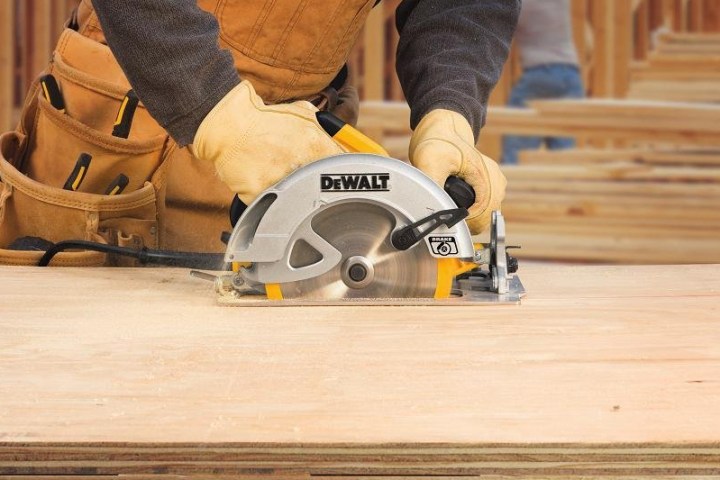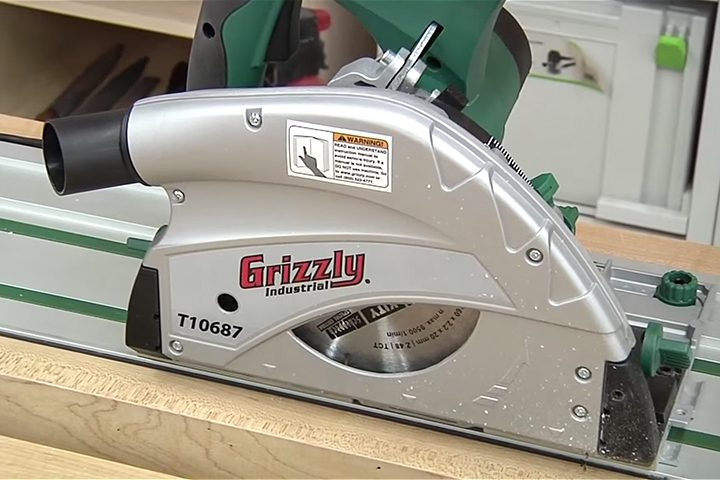
If you are just starting to get into DIY, a decent circular saw is one of the first tools you should buy. With the right tricks (more on that in a moment), a circ saw will do everything a miter saw or table saw will do — and then some.
But the basic circular saw you know has morphed and multiplied into cordless models, mini saws, track saws, and more — making your choice a bit confusing. The good news is that most of you can ignore half the saws on the market. Although cordless is always cool, corded saws are half the price while offering more power and cutting capacity. If you already own the right cordless batteries, however, you can buy the “bare tool” from the same manufacturer for roughly the price of a corded saw.`
The track saw also cannot be ignored. Its genius is in the long, grooved track, which guides the saw and guarantees smooth, straight cuts in any direction. If you cut a lot of sheet goods (plywood and MDF) for cabinetry, or you want to try making furniture but don’t have the space or budget for a table saw, consider spending a bit more to get track saw.
For the rest of us, a standard saw will suffice. You can ignore the heavier “hypoid” (or “worm-drive”) circular saws, which offer more power but are heavier and harder to control.
The saw you want is the standard “sidewinder.” Go with a 7.25-inch blade like the Dewalt 7.25 inch Lightweight Circular Saw. This saw gives you excellent control and is powerful enough to get the job done. Bigger blades are attached to bigger motors that are harder to handle, and smaller blades won’t cut thick boards. Read on for the rest of the story.
The best: DeWalt 7.25-inch Lightweight Circular Saw

Why should you buy this: The DeWalt 7.25-inch Lightweight Circular Saw is powerful and makes straight, smooth cuts with excellent control.
Who it’s for: DIYers, hobbyist woodworkers, and contractors looking for a great medium-duty saw.
How much will it cost: $120-140
Why we picked the DeWalt 7.25-inch Lightweight Circular Saw:
You’ll see less-expensive circular saws at the home center, but they come with compromises. For $120 at Home Depot, just $40 or $50 more than the low-end saws, the DeWalt offers pro-level power and accuracy in a lightweight build that is easy to handle and control.
It has 15 amps of power for cutting through hardwoods and softwoods alike, and the all-important flat, stable base plate, one of the keys to accurate cuts. It also feels comfortable (in my hands, anyway), with excellent balance.
A pile of other pluses include excellent sight lines to the front of the blade, for following a line; a smooth-operating guard that won’t snag on the edge of a workpiece; and an automatic brake that stops the blade when you release the trigger, which is a great safety feature.
When I replace my old, entry-level saw, this DeWalt is the one I’ll buy.
The best value: Grizzly Track Saw Master Pack

Why should you buy this: The Grizzly lets you see what the track saw fuss is about without ripping through your wallet.
Who it’s for: DIYers who want guaranteed straight cuts in plywood and other wide lumber.
How much will it cost: $260.
Why we picked the Grizzly Track Saw Master Pack:
There are better track saws out there (see below), but for occasional use, the Grizzly will make excellent cuts in all sorts of material, at about half the price of its competitors.
Like the rest, its track has rubber on the bottom to keep it in place on a board, but the Grizzly track is less sticky than some. That’s OK because this Grizzly kit includes track clamps that lock it down. All track saw tracks also have a plastic edge that gets trimmed slightly by the saw the first time you use it, so you can just line up the track with your pencil marks forever after. It’s magic.
These Grizzly saws also plunge, meaning you can start a cut in the middle of a panel and stop it before the end, letting you make perfect cutouts.
The best track saw for professionals: Festool TS 55 REQ

Why should you buy this: The first track saw on the market, the Festool still has no equal.
Who it’s for: Pro cabinetmakers, and lovers of amazing tools.
How much will it cost: $660.
Why we picked the Festool TS 55 REQ:
Festool turned the U.S. tool market on its head by revolutionizing portable power tools, treating them as precision instruments, not crude contractor tools. It all started with the track saw, which changed everything for DIYers, contractors, and anyone else who could pay to play.
The German company continues to improve its flagship tool, and it has too many wonderful qualities to list here. Let’s just say it’s dreamy. Let’s also say the trigger and plunge action are perfect, the depth-setting adjustment is the easiest to use, the dust collection is shockingly effective, and the cuts are crazy clean, even when beveling.
And as with all the best track saws, the Festool’s track is rock solid on almost any material, meaning you don’t need no stinking clamps.
The best value in a cordless circular saw: DeWalt DCS391B Cordless Circ Saw

Why should you buy this: If you’ve already got a good set of big cordless batteries, or need to make cuts far from power outlets.
Who it’s for: Folks willing to trade a little power for a lot of portability.
How much will it cost: $99 for the bare tool (no batteries).
Why we picked the DeWalt DCS391B Cordless Circ Saw:
In this case, my pick is not about this specific product, though the DeWalt 20V cordless saw is getting rave reviews in many tests. Any of the best cordless models will offer surprising power — Bosch, Makita, Milwaukee, DeWalt, Porter-Cable, Rigid, etc. — and unmatched portability, letting you bring the tool to any little job anywhere. The question is whether you already own a set of the batteries the saw uses. If you do, you can buy the tool only, and save a bundle, making cordless the way to go for those who don’t mind a little less power. And I do mean only a little less.
The rap on cordless circular saws used to be weak power and short battery life, but today’s lithium-ion models have changed that. You won’t get the power and stamina of a corded saw, but if you keep that second battery charged, you’ll be ready for almost anything.
How We Test
I’ve tried most of these saws, either the specific model shown here or an earlier one that is closely related. My friends have tried the others (I was the editor of Fine Woodworking magazine in another life, and I still write for them, as well as Fine Homebuilding magazine).
Most importantly, I’ve used circular saws for many years, as a remodeler, woodworker, and maker of many things, and I’ve taught lots of folks to do the same. So I know what I value most in a saw, and where people tend to struggle.
And of course, I always dig deep into user reviews, to make sure there are no surprises.
Tips and tricks for circular saws
First, some buying advice: When it comes to a standard circular saw, more money gets you more power and durability, and a better base plate. You can’t try out the power in the store and you probably shouldn’t conduct a drop test either, but you can raise the blade all the way up and sit the base plate on a flat surface. If the plate rocks, the tool doesn’t.
Aside from its MUCH lower price tag, the big advantage a circular saw has over a table saw is the way you can bring it to the work. Even for hardcore furniture-makers, this portability is invaluable for chopping big lumber and big sheet goods (plywood and MDF) to rough size before attempting to hoist them onto machines.
But armed with a few accessories, your basic circular saw can make furniture-quality cuts, too. Combine your sweet sidewinder with any sort of straightedge clamped to the work, or better yet a cutting guide like this one, and you can make long, straight cuts, right on your pencil marks.
For short crosscuts, such as cutting a board to length, the long cutting guide is unwieldy. But an inexpensive “speed square” steps in to guide the saw perfectly. Be sure to clamp down the board first so you have one hand free to hold the square in place and the other to control the saw.
Bottom line: You don’t have to have pricey tools to build great things.
Here are two more tips: Lay down a sheet of rigid foam insulation on the floor or workbench, and cut on top of that. You will get much better support than a pair of sawhorses give. Also, most power tools come with crappy blades, so consider an upgrade if your blade is struggling or leaving burn marks.


